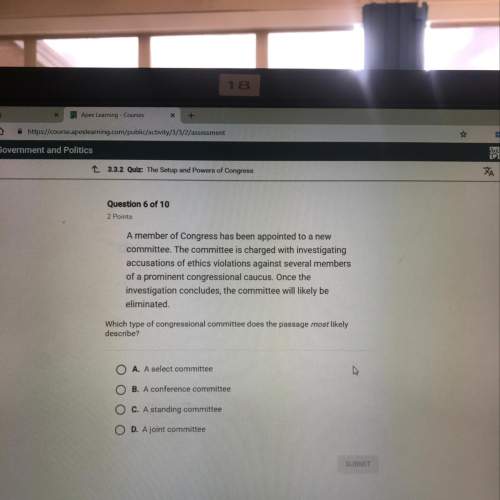
History, 25.01.2021 05:10 cherry12345627
Source 1
"The position of [Hangzhou] is such that it has on one side a lake of fresh and exquisitely clear water . . . and on the other a very large river. The waters of the latter fill a number of canals of all sizes which run through the different quarters of the city, carry away all impurities, and then enter the Lake; whence they issue again and flow to the Ocean, thus producing a most excellent atmosphere. By means of these channels, as well as by the streets, you can go all about the city. Both streets and canals are so wide and spacious that carts on the one and boats on the other can readily pass to and fro, conveying necessary supplies to the inhabitants.
At the opposite side the city is shut in by a channel, perhaps 40 miles in length, very wide, and full of water derived from the river aforesaid, which was made by the ancient kings of the country in order to relieve the river when flooding its banks. This serves also as a defence to the city, and the earth dug from it has been thrown inwards, forming a kind of mound enclosing the city.”
Marco Polo, describing a portion of the Grand Canal of China in The Travels of Marco Polo, Vol. II, ca. 1300
Source 2
"Just as ‘Arabs call every place outside ‘Arab (Arabia), ‘Ajam, so Hindūstānīs call every place outside Hindūstān [India], Khurāsān. There are two trade-marts on the land-route between Hindūstān and Khurāsān; one is Kābul, the other, Qandahār. To Kābul caravans come from Kāshghar, Farghāna, Turkistān, Samarkand, Bukhārā, Balkh, Ḥiṣār and Badakhshān. To Qandahār they come from Khurāsān. Kābul is an excellent trading-centre; if merchants went to Khīta or to Rūm, they might make no higher profit. Down to Kābul every year come 7, 8, or 10,000 horses and up to it, from Hindūstān, come every year caravans of 10, 15 or 20,000 heads-of-houses, bringing slaves (barda), white cloth, sugar-candy, refined and common sugars, and aromatic roots. Many a trader is not content with a profit of 30 or 40 on 10. In Kābul can be had the products of Khurāsān, Rūm, ‘Irāq and Chīn (China); while it is Hindūstān’s own market. . . .
Fruits of hot and cold climates are to be had in the districts near the town. Amongst those of the cold climate, there are had in the town the grape, pomegranate, apricot, apple, quince, pear, peach, plum, sinjid, almond and walnut.”
Ẓahīr-ud-Dīn Muhammad Bābur, inheritor of the trade networks first established by his grandfather, Timur, and the Timurid Empire in the 14th century, writing about the state of those networks under Mughal occupation in the Bāburnāma, 1483–1529
How did commerce help increase the influence of China and India by the 15th century?

Answers: 3
Another question on History

History, 21.06.2019 18:30
In a command economy, people are not free toa buy consumer goods.b work in factories.c make production or monetary choices.d receive an education.
Answers: 1

History, 21.06.2019 23:20
From the soviet point of view, which reagan policy most threatened to create a new arms race? a. strategic defense initiative b. u.s. support for israel c. aid to the anti-soviet rebels in afghanistan d. iran-contra scandal
Answers: 2

History, 22.06.2019 01:00
List five north american and european countries in the non-communist bloc
Answers: 3

History, 22.06.2019 07:00
Conflict often developed between and the pope over how much influence the pope had over choosing local church officials. fill in the answer! like i mean tell me the answer! i am desperate! its the last question of the test so ! asap
Answers: 3
You know the right answer?
Source 1
"The position of [Hangzhou] is such that it has on one side a lake of fresh and exquisitel...
Questions

Computers and Technology, 23.06.2019 07:50









Mathematics, 23.06.2019 07:50

Chemistry, 23.06.2019 07:50

Mathematics, 23.06.2019 07:50











